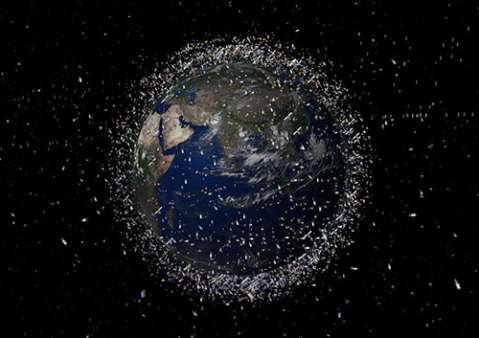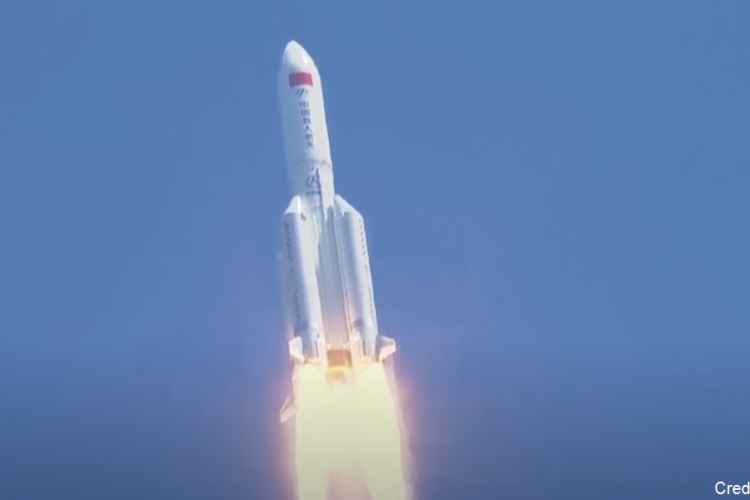REENTRY OF THE LONG MARCH 5B (CZ-5B) ROCKET STAGE CONFIRMED:
CONFIRMED by @US_SpaceCom — #CZ5B rocket body has reentered the atmosphere. Details below. https://t.co/cH9xfwbywH
— The Aerospace Corporation (@AerospaceCorp) November 4, 2022
ORIGINAL:
The third and final experiment module of China's Tiangong Space Station, Mengtian, was carried onboard a Long March 5B rocket on Oct. 31, 2022. In the following days, the rocket's estimated 22.5-metric-ton core booster – roughly the size of a 10-story building – is expected make an uncontrolled reentry back to Earth. The uncertainty of where the large debris will ultimately land presents a level of risk to human safety and property damage that is well above commonly accepted thresholds.
The Aerospace Corporation’s experts at the Center for Orbital and Reentry Debris Studies (CORDS) are actively tracking the CZ-5B rocket body and intend to share their reentry predictions as sufficient data becomes available.
Similar uncontrolled reentries of Long March rockets occurred in 2020, 2021 and most recently in July 2022 – of which, two resulted in large debris landing near populated areas. Over 88 percent of the world’s population lives under the reentry’s potential debris footprint. Factors such as the rocket core's uncontrolled manner of descent and its size, which is too large to entirely burn up in the Earth's atmosphere, collectively present risks high enough that require additional precautionary preparation around the world.
Aerospace’s space debris experts will be following the reentry, providing ongoing updates as fresh data becomes available, and supply additional analysis as developments unfold.
Tracking the Reentry
As they do with all reentries, Aerospace's CORDS experts will be actively updating their predictions of the rocket body's reentry path as new data becomes available. Be sure to follow @AerospaceCorp on Twitter to stay current and for additional analysis.
On Thursday, Nov. 3, Aerospace hosted a discussion on Twitter Spaces to discuss the reentry, opportunities to ensure space safety for the future, and what's next. Aerospace experts from CORDS, the Center for Space Policy and Strategy, and the Space Safety Institute will be joined by space industry analysts for the conversation.
Understanding the Reentry
For additional context and in-depth Q&A with our experts, be sure to follow Aerospace on Medium. Recommended reading:
- A Quick Guide to Understanding Orbital Debris Reentry Predictions
- Another Uncontrolled Chinese Rocket Body is Falling Toward Earth. Any Questions?
- Will China Make Its Giant Rocket Reentries Safer?
- A Brief History of Space Debris
- Spacecraft Reentry Basics
- What Does a Reentry Look Like
Our Experts in the News
- "Heads Up: Yet another Chinese rocket is falling back to Earth" - The Washington Post: Aerospace experts Ted Muelhaupt, Marlon Sorge and Lael Woods discuss the reentry and the value norms of behavior in the space environment would bring.
- "China's Out-of-Control Rocket Booster Is Headed Back to Earth" - The New York Times: Muelhaupt provided commentary on the risks of injury and a comparison to previous reentries of debris.
- "Rocket from Chinese space station module launch predicted to uncontrolled reentry Nov. 4" - SpaceNews: Muelhaupt discusses the reentry.
- "Falling Chinese rocket expected to enter Earth’s atmosphere in <2 days" - arsTechnica: Muelhaupt discusses the reentry and the need for norms of behavior in space.
- "Another huge piece of Chinese space junk is falling to Earth. 'Here we go again,' experts say" - Space.com: Muelhaupt and Sorge provide insight on the reentry and the lack of laws or norms on an international level to prevent such incidents from occurring.
For media inquiries, please contact DRamirez@aero.org.

Center for Orbital and Reentry Debris Studies
The Space Safety Institute at The Aerospace Corporation
The Space Policy Show: Monitoring Space Norms
To learn more read Dr. Mick Gleason's newly released paper, "No Haven for Misbehavin': A Framework for Verifying Space Norms".


